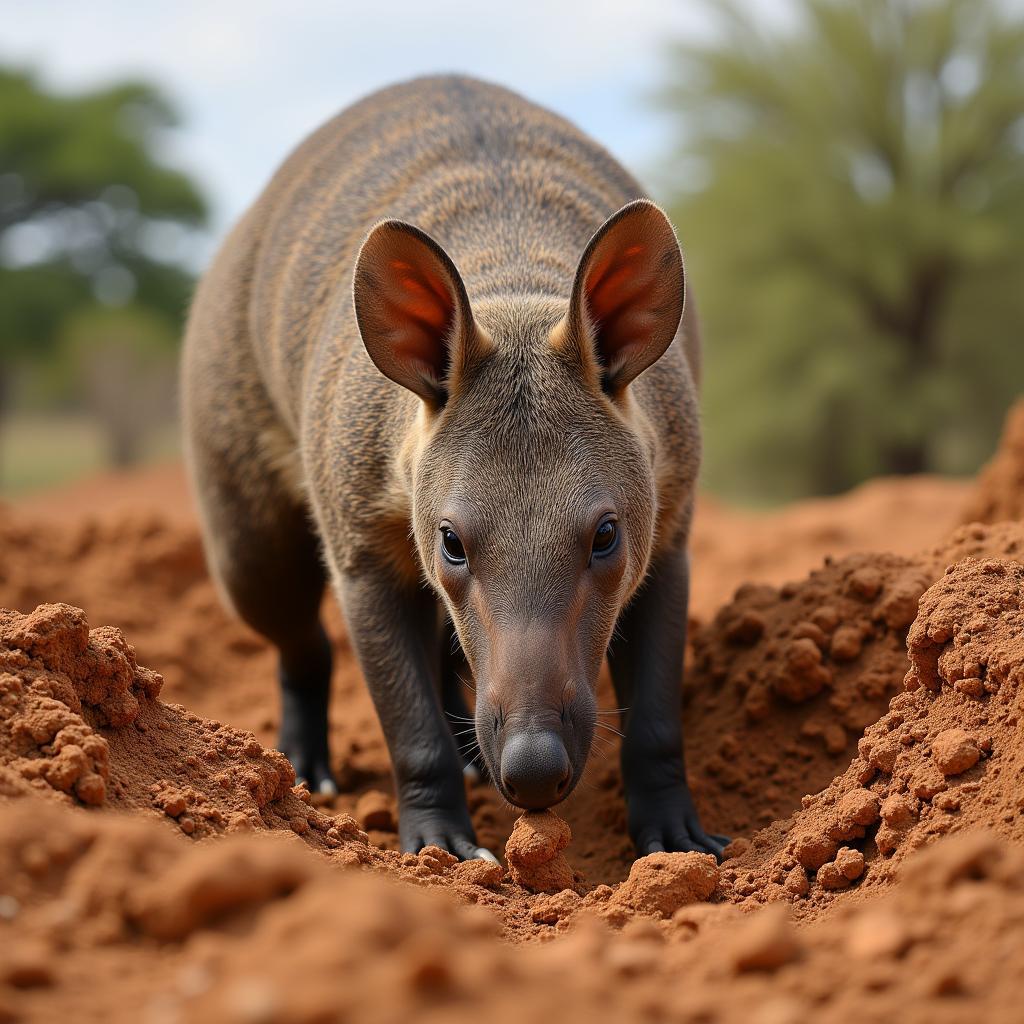Discovering the Wonders of African Burrowing Animals
African Burrowing Animals represent a fascinating array of species adapted to life beneath the surface. From the smallest insects to the largest mammals, these creatures have carved out a unique existence in the diverse landscapes of Africa. Their adaptations and behaviors offer a glimpse into the complex web of life that thrives underground. This article delves into the world of African burrowing animals, exploring their remarkable adaptations, diverse habitats, and the crucial roles they play in maintaining the ecological balance of the continent.
The Hidden World of African Burrowing Animals: Adaptations and Survival
Burrowing animals in Africa face a unique set of challenges and have evolved remarkable adaptations to thrive in their subterranean world. These adaptations range from physical modifications to specialized behaviors that allow them to navigate, find food, and survive in the often harsh underground environment.
One key adaptation is the development of powerful digging claws and forelimbs. Animals like the aardvark, with its robust claws and strong legs, are perfectly equipped for excavating extensive burrow systems. These burrows provide shelter from predators, extreme temperatures, and even wildfires. The african mongoose also exhibits impressive digging abilities, creating burrows for shelter and raising young.
 Aardvark Digging a Burrow
Aardvark Digging a Burrow
Another crucial adaptation is the ability to navigate in darkness. Many burrowing animals have reduced eyesight but enhanced senses of smell and touch. The golden mole, for example, has virtually no external eyes, relying instead on its highly sensitive nose and whiskers to navigate and find prey. Similarly, the naked mole-rat, with its poor eyesight, uses its sensitive whiskers and tactile hairs to navigate the complex tunnel systems of its underground colonies.
Respiratory adaptations are also essential for survival underground. Some burrowing animals, like the aardvark, can hold their breath for extended periods while foraging in underground tunnels. Others, like the springhare, have developed efficient lungs to cope with the lower oxygen levels often found in burrows.
Habitats and Ecological Roles of African Burrowing Animals
African burrowing animals occupy a variety of habitats, from savannas and grasslands to deserts and forests. Their distribution is largely influenced by soil type, vegetation cover, and the availability of food and water. For example, the aardvark is found throughout sub-Saharan Africa, inhabiting diverse ecosystems from arid regions to open woodlands.
The african grassland names encompass a wide range of ecosystems where burrowing animals play a crucial role in maintaining soil health and nutrient cycling. By digging and moving through the soil, these animals aerate the ground, improving drainage and water infiltration. This activity also helps to distribute nutrients and organic matter, benefiting plant growth and overall ecosystem health.
What are the most common burrowing animals in Africa?
Some of the most common African burrowing animals include the aardvark, meerkat, ground pangolin, and various species of rodents and reptiles.
Many burrowing animals are also important prey species for larger predators, forming a vital link in the food chain. For example, the meerkat, a highly social burrowing animal, is a favored prey item for birds of prey, snakes, and jackals. The intricate burrow systems they create also provide shelter for other animals, demonstrating their crucial role in supporting biodiversity.
“Burrowing animals are the unsung heroes of African ecosystems,” explains Dr. Zara Mtwana, a wildlife ecologist specializing in African biodiversity. “Their activities are essential for maintaining soil health, nutrient cycling, and overall ecosystem stability.”
Exploring the Fascinating World of Subterranean Life
The world of African burrowing animals offers a captivating glimpse into the hidden wonders of nature. From the intricate burrow systems of the naked mole-rat to the solitary life of the aardvark, these creatures have adapted to a life underground in remarkable ways. Understanding their adaptations, behaviors, and ecological roles is crucial for conserving these fascinating animals and the diverse ecosystems they inhabit.
 Meerkats in Their Burrow
Meerkats in Their Burrow
The african burrowing animals crossword clue might lead you to animals like the “aardvark,” highlighting the intriguing connection between these animals and popular culture. The study of these remarkable creatures also underscores the importance of conservation efforts to protect their fragile habitats. Learning about the african bullfrog lifespan in captivity and african bullfrog hibernation reveals the adaptive strategies of other African species. These animals, though not strictly burrowers, demonstrate similar resilience and adaptation to the African environment.
African burrowing animals play a crucial role in the intricate tapestry of life on the continent. Their continued survival is essential for maintaining the health and balance of African ecosystems.
FAQ
-
What is the largest burrowing animal in Africa? The aardvark is considered the largest burrowing animal in Africa.
-
Why do animals burrow? Animals burrow for various reasons, including shelter from predators and extreme weather, raising young, and finding food.
-
How do burrowing animals affect the environment? Burrowing animals aerate the soil, improve drainage, and distribute nutrients, benefiting plant growth and overall ecosystem health.
-
What are some threats to African burrowing animals? Habitat loss, climate change, and human activities like agriculture and mining pose significant threats to African burrowing animals.
-
How can we protect African burrowing animals? Conservation efforts such as habitat restoration, protecting endangered species, and raising awareness about the importance of these animals are crucial for their survival.
-
Do all burrowing animals live underground all the time? No, some burrowing animals, like meerkats, spend a significant amount of time above ground foraging and socializing.
-
Are there any venomous burrowing animals in Africa? Yes, some burrowing snakes and scorpions are venomous.
For further support or inquiries regarding African wildlife and culture, do not hesitate to contact us. Call: +255768904061, Email: kaka.mag@gmail.com or visit our office at Mbarali DC Mawindi, Kangaga, Tanzania. Our dedicated customer service team is available 24/7. You might also be interested in our other articles about African wildlife and culture, exploring diverse topics such as traditional music, art, and cuisine.



